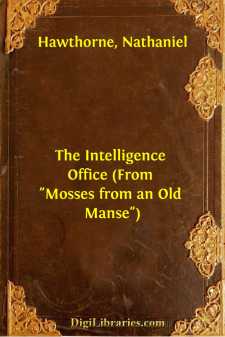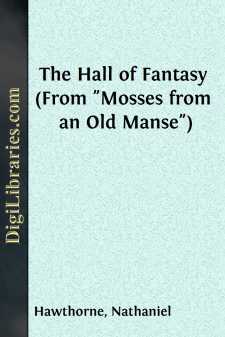Categories
- Antiques & Collectibles 13
- Architecture 36
- Art 48
- Bibles 22
- Biography & Autobiography 813
- Body, Mind & Spirit 142
- Business & Economics 28
- Children's Books 17
- Children's Fiction 14
- Computers 4
- Cooking 94
- Crafts & Hobbies 4
- Drama 346
- Education 46
- Family & Relationships 57
- Fiction 11829
- Games 19
- Gardening 17
- Health & Fitness 34
- History 1377
- House & Home 1
- Humor 147
- Juvenile Fiction 1873
- Juvenile Nonfiction 202
- Language Arts & Disciplines 88
- Law 16
- Literary Collections 686
- Literary Criticism 179
- Mathematics 13
- Medical 41
- Music 40
- Nature 179
- Non-Classifiable 1768
- Performing Arts 7
- Periodicals 1453
- Philosophy 64
- Photography 2
- Poetry 896
- Political Science 203
- Psychology 42
- Reference 154
- Religion 513
- Science 126
- Self-Help 84
- Social Science 81
- Sports & Recreation 34
- Study Aids 3
- Technology & Engineering 59
- Transportation 23
- Travel 463
- True Crime 29
Sort by:
CHAPTER XXIVTHE TOWER AMONG THE APENNINESIt was in June that the sculptor, Kenyon, arrived on horseback at the gate of an ancient country house (which, from some of its features, might almost be called a castle) situated in a part of Tuscany somewhat remote from the ordinary track of tourists. Thither we must now accompany him, and endeavor to make our story flow onward, like a streamlet, past a gray...
more...
CHAPTER IMIRIAM, HILDA, KENYON, DONATELLOFour individuals, in whose fortunes we should be glad to interest the reader, happened to be standing in one of the saloons of the sculpture-gallery in the Capitol at Rome. It was that room (the first, after ascending the staircase) in the centre of which reclines the noble and most pathetic figure of the Dying Gladiator, just sinking into his death-swoon....
more...
In the old times of religious gloom and intolerance lived Richard Digby, the gloomiest and most intolerant of a stern brotherhood. His plan of salvation was so narrow, that, like a plank in a tempestuous sea, it could avail no sinner but himself, who bestrode it triumphantly, and hurled anathemas against the wretches whom he saw struggling with the billows of eternal death. In his view of the matter,...
more...
Two lovers, once upon a time, had planned a little summer-house, in the form of an antique temple, which it was their purpose to consecrate to all manner of refined and innocent enjoyments. There they would hold pleasant intercourse with one another, and the circle of their familiar friends; there they would give festivals of delicious fruit; there they would hear lightsome music, intermingled with the...
more...
Grave figure, with a pair of mysterious spectacles on his nose and a pen behind his ear, was seated at a desk in the corner of a metropolitan office. The apartment was fitted up with a counter, and furnished with an oaken cabinet and a Chair or two, in simple and business-like style. Around the walls were stuck advertisements of articles lost, or articles wanted, or articles to be disposed of; in one...
more...
What a singular moment is the first one, when you have hardly begun to recollect yourself after starting from midnight slumber! By unclosing your eyes so suddenly, you seem to have surprised the personages of your dream in full convocation round your bed, and catch one broad glance at them before they can flit into obscurity. Or, to vary the metaphor, you find yourself, for a single instant, wide awake...
more...
It has happened to me, on various occasions, to find myself in a certain edifice which would appear to have some of the characteristics of a public exchange. Its interior is a spacious hall, with a pavement of white marble. Overhead is a lofty dome, supported by long rows of pillars of fantastic architecture, the idea of which was probably taken from the Moorish ruins of the Alhambra, or perhaps from...
more...
INTRODUCTION THE first three numbers in this collection are tales of the White Hills in New Hampshire. The passages from Sketches from Memory show that Hawthorne had visited the mountains in one of his occasional rambles from home, but there are no entries in his Note Books which give accounts of such a visit. There is, however, among these notes the following interesting paragraph, written in 1840 and...
more...
INTRODUCTORY TO "THE GORGON'S HEAD." Beneath the porch of the country-seat called Tanglewood, one fine autumnal morning, was assembled a merry party of little folks, with a tall youth in the midst of them. They had planned a nutting expedition, and were impatiently waiting for the mists to roll up the hill-slopes, and for the sun to pour the warmth of the Indian summer over the fields and...
more...
THE DOLLIVER ROMANCE. In "The Dolliver Romance," only three chapters of which the author lived to complete, we get an intimation as to what would have been the ultimate form given to that romance founded on the Elixir of Life, for which "Septimius Felton" was the preliminary study. Having abandoned this study, and apparently forsaken the whole scheme in 1862, Hawthorne was moved to...
more...











